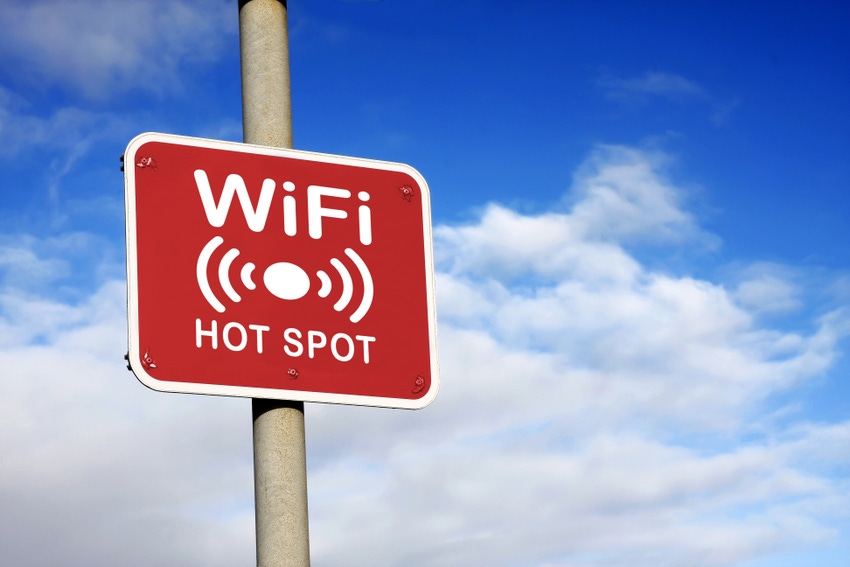Operators, businesses and governments need to assess what’s in place already before adding more access points – just as they would plan a mobile network.
July 5, 2016

Telecoms.com periodically invites expert third parties to share their views on the industry’s most pressing issues. In this piece Todd Mersch, Co-Founder of XCellAir argues that merely increasing the number of global Wi-Fi hotspots alone is not enough to connect the unconnected.
June 20th was World Wi-Fi Day, run by the Wireless Broadband Alliance (WBA) not just to promote Wi-Fi as a tool of socioeconomic development, but also to focus attention on the ‘Urban Unconnected’.
Solving the digital divide often focuses on rural broadband, specifically addressing the expense and lack of options for remote areas to get connected. Astonishingly though, over half of those who are not able to get online are ‘Urban Unconnected’ – people living in major global cities without access to a broadband connection. Many of these are in the Middle East and Asia Pacific regions, but in Europe and North America it remains a major problem, with 17% and 23% respectively having no broadband despite living in a major city. More than a quarter (27%) of New Yorkers are considered Urban Unconnected, for example.
So who is it that lacks an internet connection? The WBA’s research found that levels of income are closely linked to broadband adoption rates, but there are also other aspects that play a role such as age, access to computers and computer literacy. In short, those who are most vulnerable lack a broadband connection – a vital utility that can empower them.
The public and private sectors across the world are looking to move everything online as much as possible, and there is a real danger that this ongoing process will leave the unconnected behind. This has been the impetus behind the push to have internet access recognised as a human right, alongside rights to assembly, expression, and other fundamental human rights. If basic services are only available online, then those without a way to get online will effectively be excluded from these services. The digital divide is about more than online access – it’s about who is able to be a participating citizen in tomorrow’s society.
World Wi-Fi Day aims to put a dent in this growing issue, and the operators supporting by offering free broadband should be commended. Wi-Fi connectivity is standard in smartphones, tablets, and laptops, so the provision of Wi-Fi is clearly the best way to start to bridge this divide. It’s not the complete solution – education and access to devices are clearly vital – but the simplicity of Wi-Fi plus the lack of a need for infrastructure inside the home makes it a natural choice.
But just as important as using Wi-Fi to bridge the digital divide is how it is done. There needs to be a savvier, more intelligent approach than simply providing more access points. Operators, businesses and governments need to assess what’s in place already before adding more access points – just as they would plan a mobile network. Ease of connectivity and reliability are paramount if this initiative is to actually enable the unconnected. By simply adding unmanaged Wi-Fi access points without planning, connection issues, congestion and interference are inevitable, and ultimately there is a risk of wasting this charitable investment.
The first step needs to be maximising what is already available. Research we carried out last year found that in an average area, the Wi-Fi capacity unavailable for use, thanks to inefficiencies, was enough to stream another 25 HD videos. By managing what is already in place with greater efficiency, it would be possible to offer connectivity to people who until now were unconnected. An operator who could provide this sort of public service would enjoy a great deal of goodwill without massive investment in additional Wi-Fi infrastructure.
Operators now have clear visibility over their networks – it’s never been easier to create the optimal environment for Wi-Fi capacity, improve the service quality in congested areas and ensure excellent quality of experience even in areas where there is interference from outside sources. This approach of carefully managed and optimized Wi-Fi needs to be taken for getting the Urban Unconnected online. With careful planning and freeing up capacity, rather than just setting up more connections, the number of Urban Unconnected measured next June 20th could be much lower.
 Todd Mersch is the Co-Founder & EVP of Sales & Marketing at XCellAir. Prior to XCellAir, Todd spent nine years leading the Trillium software business at Continuous Computing and Radisys. During this time, he helped refocus Trillium on providing software solutions for 3G and LTE small cells, and played a role in enabling the world’s first LTE small cell deployments.
Todd Mersch is the Co-Founder & EVP of Sales & Marketing at XCellAir. Prior to XCellAir, Todd spent nine years leading the Trillium software business at Continuous Computing and Radisys. During this time, he helped refocus Trillium on providing software solutions for 3G and LTE small cells, and played a role in enabling the world’s first LTE small cell deployments.
Read more about:
DiscussionAbout the Author(s)
You May Also Like








.png?width=300&auto=webp&quality=80&disable=upscale)


_1.jpg?width=300&auto=webp&quality=80&disable=upscale)


.png?width=800&auto=webp&quality=80&disable=upscale)